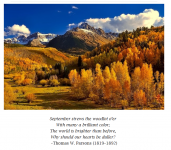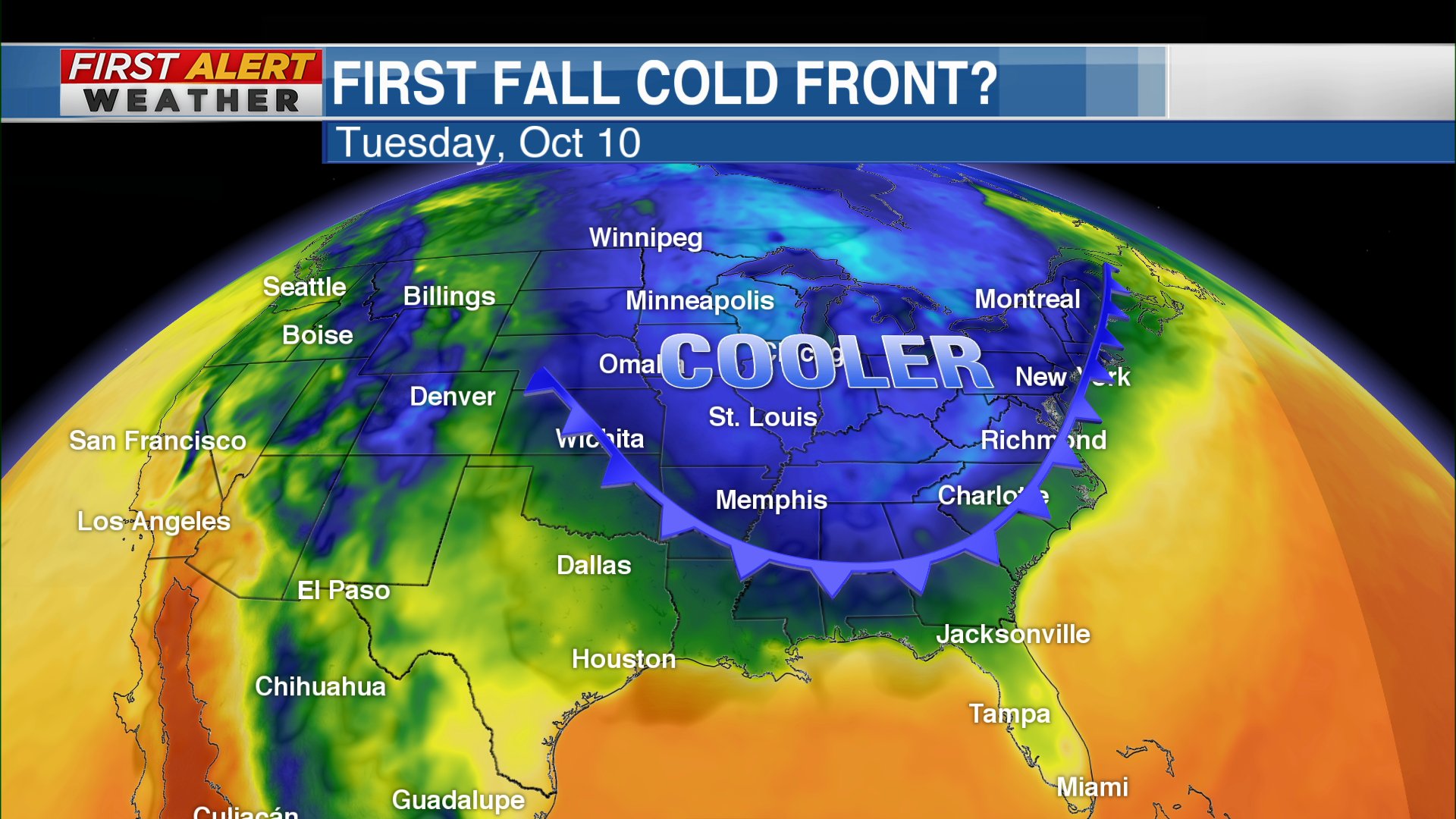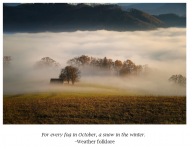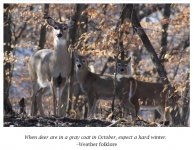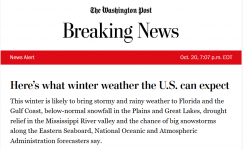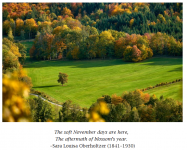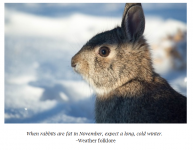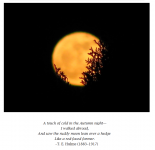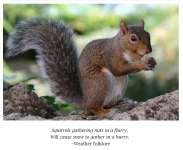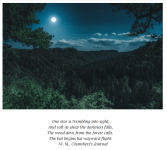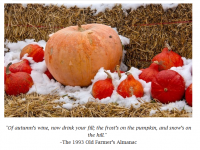You are using an out of date browser. It may not display this or other websites correctly.
You should upgrade or use an alternative browser.
You should upgrade or use an alternative browser.
Solar Grand Solar Minimum part deux
- Thread starter Dennis Olson
- Start date
-
- Tags
- grand solar minimum
northern watch
TB Fanatic
Major Cold Trend Set To Unleash 'Frost-Freeze' Threat Across Eastern US
BY TYLER DURDENZERO HEDGE
THURSDAY, SEP 28, 2023 - 08:40 PM
We all survived the apparent 'climate apocalypse' corporate media warned about this summer with endless headlines about how the world would imminently erupt into a giant fireball. The climate math pushed by media outlets such as ABC, The New York Times, Axios, and Bloomberg was so questionable that the National Oceanic and Atmospheric Administration had to denounce the media 'hysteria' about the "hottest day ever." By late August, 1,600 scientists signed a declaration refuting the existence of a climate crisis, as now the loudest media outlets warning about climate doom have gone silent as fall approaches.
Looking at Bloomberg data using the "NT" headline search function, "hottest day ever" in all media headlines tends to surge in July, the hottest point of the Northern Hemisphere summer. Like 2022, the public was bombarded with climate doom headlines this summer as media tried to convince folks that cow farts and petrol cars were behind sweltering temperatures. Now, those headlines have all but vanished.
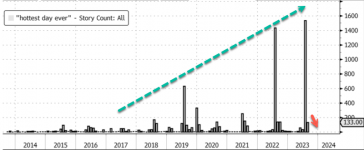
"Hottest day ever" headlines surged at the time average temperatures across the Lower 48 peak in July. A 30-year seasonal trend of average temperatures showed, for the most part, that deviation from the mean was not severe. And since the peak, Lower 48 average temperatures have been sliding.
The climate is changing:
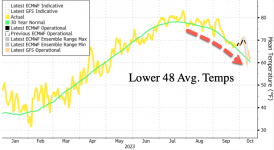
Now, meteorologists forecast a cold front to sweep parts of the Lower 48 in weeks.
Private weather forecasters BAMWX said, "We have been talking about an October cold front for weeks in our videos to clients. Overnight data took a MAJOR turn to cool!"
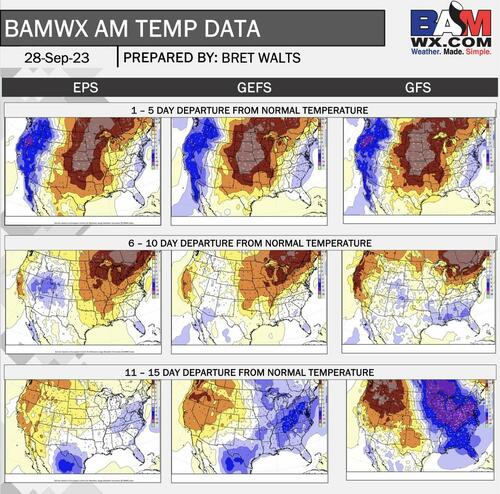

"*MAJOR* colder trends across all of the model data last night," BAMWX continued, adding, "One of the biggest flips in model guidance we've seen in a long time and it would increase the threat of a frost/freeze the second week of October for the Midwest/Great Lakes/NE US."
In a separate forecast, meteorologist Spencer Denton of Action Five News in Memphis forecasts a similar cold blast around Oct. 10: "There are signs of our first decent fall cold front arriving around Oct. 10. How cool or cold is still in question. Stay tuned fall weather fans."
Another meteorologist shared a long-term snow forecast...
We cited Peter Geiger, editor of the Farmer's Almanac, in an Aug. 19 weather note that said, "The 'brrr' is coming back!
We expect more snow and low temperatures nationwide."
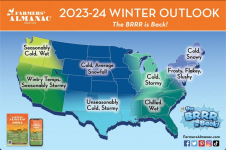
Suppose a cold blast does materialize in the Lower 48 by mid-Oct. It may have widespread implications for ag and energy markets.
Journos at corporate media are plotting their next bombardment of headlines, somehow linking cold weather to cow farts.
The climate is constantly changing, and the global warming narrative is imploding as even climate alarmist Bill Gates had to backtrack on his 'climate doom' prophecies recently.
Major Cold Trend Set To Unleash 'Frost-Freeze' Threat Across Eastern US | ZeroHedge
ZeroHedge - On a long enough timeline, the survival rate for everyone drops to zero
Last edited:
northern watch
TB Fanatic
Here is another outlook.
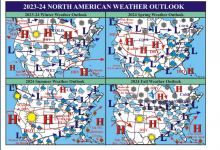

Weather Forecasts - Long-range weather outlooks for the U.S. & Southern Canada
United States long-term weather forecasts and Canadian long-term forecasts and weather outlooks
www.longrangeweather.com
northern watch
TB Fanatic
Jackpine Savage
Veteran Member
We are about three weeks past our average first frost date and I think we had 36 one morning. Last Sunday and Monday we were close to 90! Finally starting to get some rain here and there, just in time to screw up soybean harvest.
northern watch
TB Fanatic
northern watch
TB Fanatic
northern watch
TB Fanatic
northern watch
TB Fanatic
No kidding! And here in north-central NY state, we've only gotten into the 30s once (37 for an hour early Friday morning), and there's still no frost in the forecast!Woke up to 35 degrees here....that's a bit early for lows that low here :-)
Summerthyme
northern watch
TB Fanatic
northern watch
TB Fanatic
jed turtle
a brother in the Lord
Such beautiful images! Thanks for posting these!
northern watch
TB Fanatic
northern watch
TB Fanatic
northern watch
TB Fanatic
1st major storm of the season drops up to a foot of snow in Montana
The first major snowstorm of the season dropped up to a foot of snow in the Helena, Montana, area, sending an army of snowplows out on the roadsBy AMY BETH HANSON Associated Press
October 25, 2023, 1:19 AM

Heavy snow weighs down trees as snow falls in East Helena, Mont., Wednesday, Oct. 25, 2023. The first major snowstorm of the season brought up to a foot of snow to the Helena area by Wednesday morning. (AP Photo/Amy Beth Hanson)
HELENA, Mont. -- The first major snowstorm of the season dropped up to a foot (30 centimeters) of snow in the Helena, Montana, area by Wednesday, sending an army of snowplows and sand trucks out onto the roads.
Residents woke up to swirling snow and the sound of shovels on sidewalks just days after temperatures rose into the lower 80s. Trees decked out in fall colors and some Halloween decorations were weighed down with snow. Helena Public Schools canceled six school bus routes Wednesday morning, but no schools were closed.
The National Weather Service warned of hazardous travel on snowy mountain passes and ice on some highways when snow initially melts and then freezes as road temperatures drop.
Plows scraped snow off the highways, streets and parking lots and sand was scattered on roads to increase traction as the Montana Highway Patrol responded to dozens of crashes and slide-offs, including jackknifed semi-tractor trailers, according to the patrol's incident website.
The first snowfall of the season “is always the most dangerous because people just aren’t used to it yet” after driving for months on mostly dry pavement, said Matt Ludwig, a meteorologist with the National Weather Service in Great Falls. Drivers aren’t used to dealing with less traction, slower speeds and longer stopping distances, he said.
Cold air moving down from northwestern Canada has combined with a moist Pacific weather system, leading to freezing temperatures and expected snowfall amounts up 14 inches (36 centimeters) in Washington's northern Cascade Mountains and 18 inches (46 centimeters) in the mountains of Montana, the National Weather Service forecasts. Some higher elevations in the northern Rockies could see snow totals of 2 feet (61 centimeters) or more.
After the first wave of snow, it was Helena that saw the most accumulation, with a couple spots reporting 13 inches (33 centimeters) of snow. However, the official site at the airport had half that amount, said Cody Molvan, chief meteorologist for the National Weather Service in Great Falls said Wednesday.
Some towns in central Montana reported 10 inches (25 centimeters) of snow, while other areas along the Rocky Mountain Front had 6 to 8 inches (16 to 20 centimeters) of snow as the storm moved east. There was black ice on roads as the storm moved into the Billings area in southeastern Montana, the state's Department of Transportation said.
The first wave of snow in western Montana ended at midday Wednesday and a second round — less widespread and with much less accumulation — was forecast from Wednesday night into Thursday morning, the weather service said.
The storm brought a sharp change in weather.
Helena tied record temperatures in the lower 80s (high 20s Celsius) late last week, which is about 25 degrees above average for this time of year, Ludwig said. Great Falls also had a day in the low 80s late last week, before being covered in snow on Wednesday.
Temperatures could fall into the low single digits with wind chill values below zero Wednesday night into Thursday morning in Great Falls, the forecast says.
“If that's not a shock to your system, I don't know what is,” Ludwig said.
Helena's Walmart store still had a display of kayaks outside on Wednesday, their prices nearly covered in snow.
The snow had also moved across northwestern and north-central North Dakota by early Wednesday, prompting the North Dakota Department of Transportation to advise residents not to travel in five counties, including the Williston area, because of icy roads and areas of near zero visibility. Oversized loads are not allowed to travel through the area.
State law restricts travel for oversized loads when inclement weather causes the vehicle or attachment to swerve, whip, sway or fail to follow the path of towing vehicle, the agency said.
North Dakota state Rep. Jeremy Olson was headed home from the Legislature’s adjourned special session in Bismarck to his farm near Arnegard, in the area where the heaviest snowfall amounts are expected. He said he bought 400 pounds (181 kilograms) of rock salt to put over his pickup truck’s back axle for extra weight and greater traction on snow and ice.
In the days before the storm, his wife and daughters went shopping for the next week, got shovels ready and prepared a generator in case their power goes out.
“Things we’ve learned over the past years, a few lessons learned over past experiences gave us a good chance to get prepared for this thing,” Olson told The Associated Press.
The area of Williston, Watford City and Minot, in North Dakota’s oil field, could receive the heaviest snowfall, potentially 8 inches to a foot (20 to 30 centimeters), said Nathan Heinert, a meteorologist with the National Weather Service in Bismarck. Bismarck could see 4 to 6 inches (10 to 15 centimeters) of snow late Thursday after rain on Wednesday, he said.
The snow closed U.S. Highway 14-16-20 outside the east entrance to Yellowstone National Park, according to the Wyoming Department of Transportation. There was no word on when the gate 50 miles (80 kilometers) west of Cody, Wyoming, would reopen. The park’s east, south and west entrances and nearly all roads in the park are scheduled to close to car and truck traffic for the season next Wednesday.
___
Associated Press reporters Jack Dura in Bismarck, North Dakota and Mead Gruver in Cheyenne, Wyoming, contributed to this report.

1st major storm of the season drops up to a foot of snow in Montana
The first major snowstorm of the season dropped up to a foot of snow in the Helena, Montana, area, sending an army of snowplows out on the roads
Last edited:
Heck, WE haven't seen a frost yet, and it only got below 40 once! It's getting here... looks like our low for Halloween and the following night is 33°, so we'll probably see a frost then. Tomorrow, I need to pick the last sweet peppers... probably a bushel, and get them in the dehydrator.We're looking at the 30s for overnight lows next week. It's a little early for that!
I finally caught the rat who was eating all the plants in the greenhouse, so hopefully we can get some greens growing. We've got a cucumber plant putting small cukes on, and a tomato plant I rooted from a cutting has set a bunch of tomatoes, but I don't know how much wood we want to burn to keep stuff going.
If it looks like temps aren't going to crash right away, we'll probably heat it at night for a few weeks... temps get up into the 80s in there during any sunny day, even when it's below 30 outside.
Summerthyme
northern watch
TB Fanatic
BenIan
Veteran Member
Ash cloud produced by eruption at Klyuchevskoy reaches 14 km (46 000 feet) a.s.l., Russia
Significant activity was reported at Klyuchevskoy volcano in Kamchatka, Russia, on October 31, 2023. The Aviation Color Code was raised to Red at 02:34 UTC, and satellite data indicated an ash column reaching up to 14 km (46 000 feet) above sea level at 23:10 UTC.
Klyuchevskoy volcano in Kamchatka, Russia, experienced significantly increased activity on October 31, 2023. As a result, KVERT raised the Aviation Color Code from Orange to Red. Satellite data revealed that the ash column ascended to altitudes ranging from 9.5 km to 9.8 km (31 200 – 32 150 feet) above sea level, stretching 192 km (119 miles) in a southwest direction.
The activity was characterized by intense lava fountaining at the summit vent. Jets of lava were propelled to heights exceeding 500 m (1 640 feet), contributing to the construction of an enlarging cinder cone within the main crater.
Apart from the summit’s activity, emissions of fluid and glowing lava from the southeastern Apakhonchich chute have seen a noticeable uptick. These emissions have led to the formation of a lava flow that has stretched about 3.8 km (2.4 miles) from the summit, reaching an elevation of approximately 2 700 m (8 858 feet). Simultaneously, another arm of active lava continued to erupt from a vent on the volcano’s northwestern flank.
The eruption continued through the day and further intensified. Satellite data acquired at 23:10 UTC revealed that the ash cloud rose to 14 km (46 000 feet) above sea level and was extending 1 500 km (932 miles) toward the southeast of the volcano.
The summit explosive-effusive eruption of the volcano continues and the Aviation Color Code remains at a Red.
[PICS & VIDEO AT LINK]
Ash cloud produced by eruption at Klyuchevskoy reaches 14 km (46 000 feet) a.s.l., Russia
Wednesday, November 1, 2023Updated onWednesday, November 1, 2023 11:55 UTCSignificant activity was reported at Klyuchevskoy volcano in Kamchatka, Russia, on October 31, 2023. The Aviation Color Code was raised to Red at 02:34 UTC, and satellite data indicated an ash column reaching up to 14 km (46 000 feet) above sea level at 23:10 UTC.
Klyuchevskoy volcano in Kamchatka, Russia, experienced significantly increased activity on October 31, 2023. As a result, KVERT raised the Aviation Color Code from Orange to Red. Satellite data revealed that the ash column ascended to altitudes ranging from 9.5 km to 9.8 km (31 200 – 32 150 feet) above sea level, stretching 192 km (119 miles) in a southwest direction.
The activity was characterized by intense lava fountaining at the summit vent. Jets of lava were propelled to heights exceeding 500 m (1 640 feet), contributing to the construction of an enlarging cinder cone within the main crater.
Apart from the summit’s activity, emissions of fluid and glowing lava from the southeastern Apakhonchich chute have seen a noticeable uptick. These emissions have led to the formation of a lava flow that has stretched about 3.8 km (2.4 miles) from the summit, reaching an elevation of approximately 2 700 m (8 858 feet). Simultaneously, another arm of active lava continued to erupt from a vent on the volcano’s northwestern flank.
The eruption continued through the day and further intensified. Satellite data acquired at 23:10 UTC revealed that the ash cloud rose to 14 km (46 000 feet) above sea level and was extending 1 500 km (932 miles) toward the southeast of the volcano.
The summit explosive-effusive eruption of the volcano continues and the Aviation Color Code remains at a Red.
[PICS & VIDEO AT LINK]
Shadow
Swift, Silent,...Sleepy
I believe that is high enough to cause some cooling if the particles are small enough to stay aloft.Ash cloud produced by eruption at Klyuchevskoy reaches 14 km (46 000 feet) a.s.l., Russia
Shadow
northern watch
TB Fanatic
northern watch
TB Fanatic
northern watch
TB Fanatic
northern watch
TB Fanatic
jed turtle
a brother in the Lord
I had a busy summer building a dome for my daughter 130 miles to the east of here, on the maine coast. Finally told her I needed to focus on firewood in October. It has taken me the last four weeks to gather the 4-5 cords of hardwood (mostly maple this year) and split it and stack it in the wood shed. been doing this for 50 plus years. have only ever burned wood to keep the place warm. But I am concerned that this winter may be colder than usual, the snow deeper, and the winds stiffer than in the past several decades. Hope all my tb2k compatriots are settling in and preparing to outlast the next couple of seasons... I can’t afford to lose any of the “brain trust” here.
and man would I love to have a set of cd‘s or whatever media that could be acquired that one could pop into the computer and have ALL the entire Searchable archives of tb2k at my fingertips if the internet goes down for a while... can you imagine?
and man would I love to have a set of cd‘s or whatever media that could be acquired that one could pop into the computer and have ALL the entire Searchable archives of tb2k at my fingertips if the internet goes down for a while... can you imagine?
northern watch
TB Fanatic
northern watch
TB Fanatic
northern watch
TB Fanatic
northern watch
TB Fanatic
Seeker22
Has No Life - Lives on TB
Almost looks like a Windberg painting. Since 1983, I've spelled it Wyndberg. Mandella efect strikes again, or just getting old?
northern watch
TB Fanatic
northern watch
TB Fanatic
northern watch
TB Fanatic
Volcanic eruption remains highly likely in Iceland amid 'constant' seismic activity, officials say
About 800 earthquakes have been measured so far on Wednesday, officials said.By Meredith Deliso
ABC News
November 15, 2023, 2:30 PM
Iceland braces for ‘significant likelihood’ of volcanic eruption
More than 20,000 quakes have struck the country since Oct. 25 as officials warn that a volcanic eruption could happen soon.
There remains a "significant likelihood" of a volcanic eruption in the coming days in southwestern Iceland, the country's meteorological office said, as hundreds of earthquakes continue to shake the region.
About 800 earthquakes have been measured so far on Wednesday, with the main seismic activity in the area of the coastal fishing town of Grindavik, the Icelandic Meteorological Office said Wednesday morning. More than 20,000 quakes have shaken the area since late October, with seismic activity "constant" since Saturday, officials said.
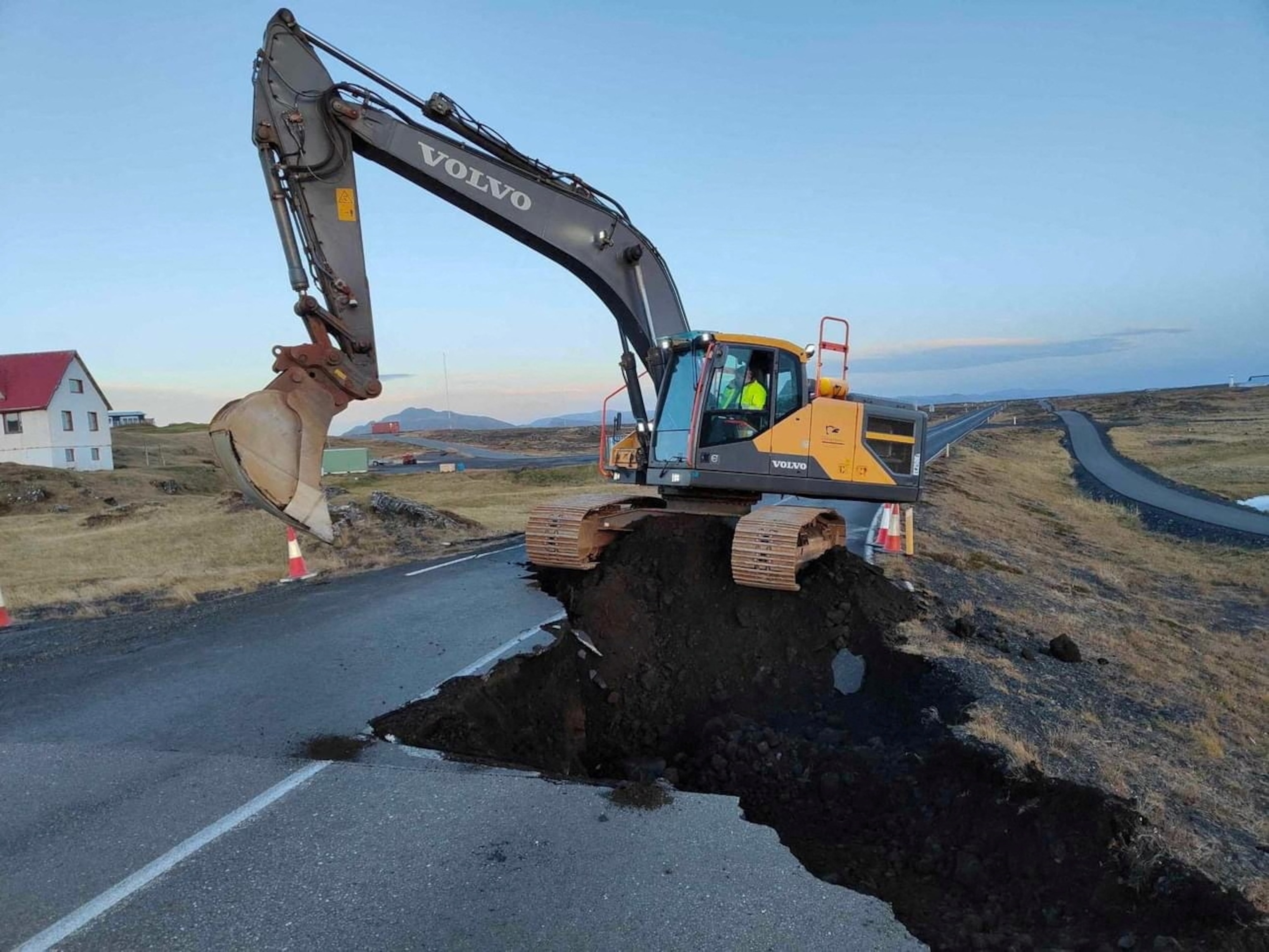
Street work continues after cracks emerged on a road due to volcanic activity near Grindavik, Iceland, Nov. 14, 2023.
RAOI/Reuters
"Most earthquakes are occurring along the magma intrusion, with the majority being micro-earthquakes," the Icelandic Meteorological Office said Tuesday.
Due to strong indications of an imminent eruption, officials declared a state of emergency near the Mount Fagradalsfjall volcano on the sparsely populated Reykjanes Peninsula. About 3,700 residents of Grindavik were told to begin evacuating on Friday, according to the Department of Civil Protection and Emergency Management.
As the region braces for a possible volcanic eruption, residents have been offered a last chance to go home to retrieve belongings and pets. Iceland authorities holding stopwatches gave residents on Wednesday five minutes to collect what they left behind when they evacuated.
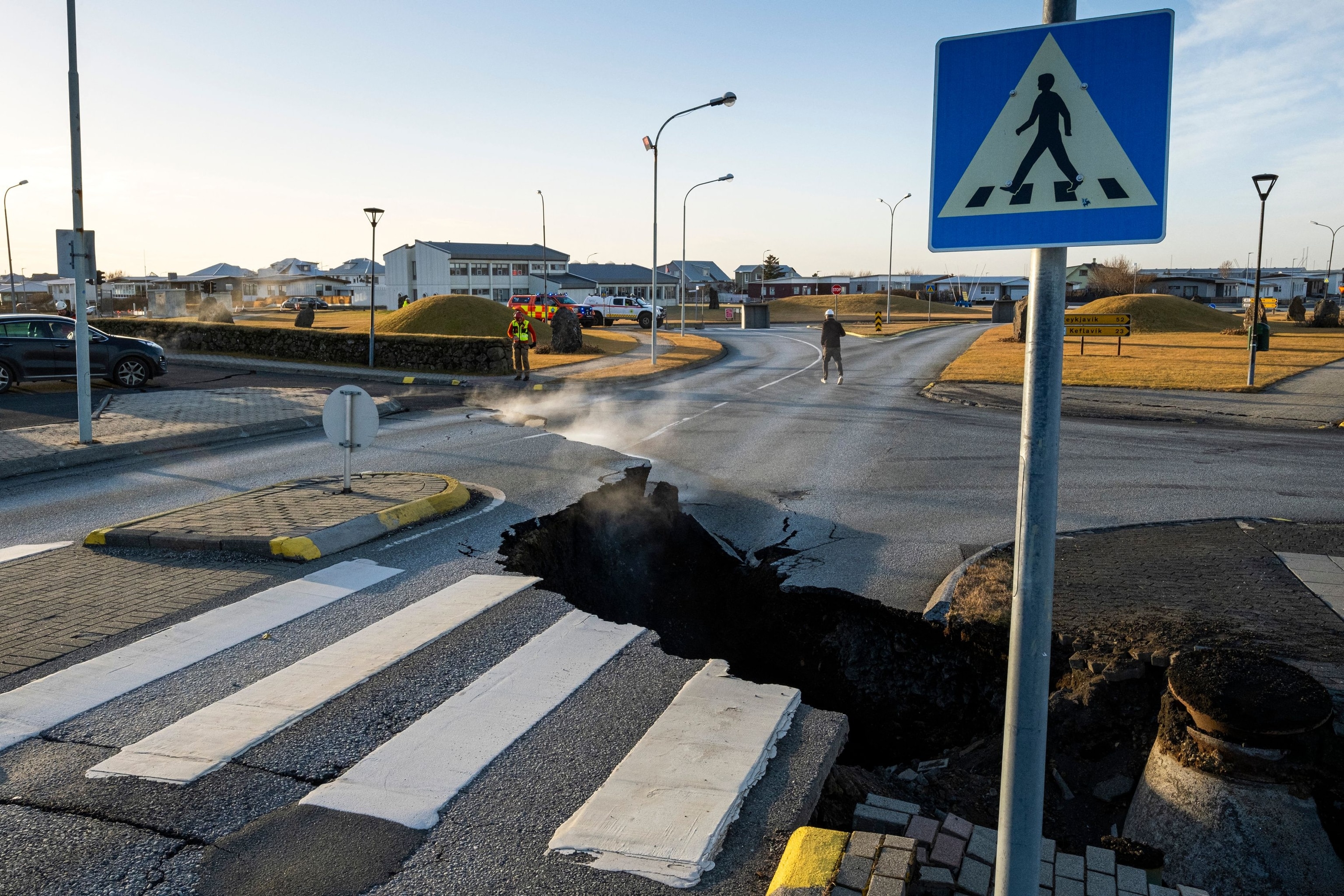
A crack cuts across the main road in Grindavik in southwestern Iceland following earthquakes, Nov. 13, 2023.
Kjartan Torbjoernsson/AFP/Getty Images

A police officer stands by the crack in a road in the fishing town of Grindavik, which was evacuated due to volcanic activity, in Iceland, November 15, 2023.
Marko Djurica/Reuters
The Blue Lagoon, a well-known thermal spa in the town of Grindavik, closed its doors Nov. 9, saying the chances of an eruption "have significantly increased." It will remain closed until at least the end of the month.
Fagradalsfjall, one of Iceland's most popular tourist attractions, has erupted three times since 2021, most recently in July.
ABC News' Kevin Shalvey contributed to this report.

Volcanic eruption remains highly likely in Iceland amid 'constant' seismic activity, officials say
There remains a "significant likelihood" of a volcanic eruption in the coming days in southwestern Iceland, the country's meteorological office said.
northern watch
TB Fanatic
northern watch
TB Fanatic
EUROPE’S BEST START TO A SKI SEASON IN MEMORY; MAINE’S HISTORICALLY COLD FIRST HALF OF NOVEMBER; ‘SNOW PTSD’ IN SAN BERNARDINO MOUNTAINS; + WHERE ARE THE SUNSPOTS?
NOVEMBER 17, 2023 CAP ALLONElectroverse
EUROPE’S BEST START TO A SKI SEASON IN MEMORY
Countering mainstream groupthink, reality is once again slapping climate alarmism square in the chops.Recently, ski resorts from the French Alps right the way down to the Italian Dolomites have been reporting more than 3 feet of fresh powder, resulting in a historically-early start to the the European ski season.
Absurd notions that Europe’s favorite winter pastime is a thing of the past have taken a hit after temperatures across the region fell off a cliff in November, back to “a crisp 1990s sort of climate,” reports goodnewsnetwork.org.
In many parts parts of the Alps, snow totals have actually exceeded 6 feet which has led big-name resorts in France, Switzerland, Italy, and Austria bringing their opening dates of the 2023-24 season forward by at least a week, to November 18.
Resorts such as Tignes and Val Thorens in France, Passo del Tonale, Temu, and Madonna di Campiglio in Italy, Kitzbühel in Austria, and Davos, Zermatt, and Verbier in Switzerland are all opening early–with the latter opening three weeks early.
“Storms have been piling into the Alps for the last two weeks, with snow accumulations of more than 1 meter [3.3ft] quite widespread now on the upper slopes,” said Ian McIlrath, managing director of Ski Solutions holiday company.
“This will ensure a solid base for the winter ahead, and with a lot more snow in the forecast, it’s shaping up to be one of the best starts to the winter ski season that I can remember.”
Indeed, looking ahead, Europe is due another absolute pounding — from Scandinavia, through the Alps, to the Balkans:

GFS Total Snowfall (cm) Nov 17 – Dec 3 [tropicaltidbits.com]
As anomalous cold sets in:

GFS 2m Temperature Anomalies (C) Nov 24 [tropicaltidbits.com]
MAINE’S HISTORICALLY COLD FIRST HALF OF NOVEMBER
The first half of November has been one of the chilliest-ever across New England states, such as Maine.Looking to the past 30-years of climate data, first half of November 2023 (1st – 15th) has come out as the second-coldest at 38.2F:

Another blast of polar cold is forecast to descend into the region Thanksgiving week, as it is the majority of the Lower 48:

GFS 2m Temperature Anomalies (C) Nov 21 – Nov 27 [tropicaltidbits.com]
All this cold air has assisted the region’s ski and snowboarding resorts, too, allowing them to open early.

GFS Total Snowfall (cm) Nov 17 – Dec 3 [tropicaltidbits.com]
‘SNOW PTSD’ IN SAN BERNARDINO MOUNTAINS
Last season’s unprecedented snowfall hit Sierra mountain communities hard, and the forecast storms are bringing unwanted flashbacks.San Bernardino Mountain residents are used to snow, but the magnitude of last season storms was unlike anything the region has ever seen. Eight months later, recovery is still ongoing, and worry is rife that this coming winter will bring repeat punishment.
For weeks last winter, many San Bernardino Mountains residents remained trapped in their homes without power, buried under as much as 12 feet of snow.
Some 350 residences and businesses were damaged or destroyed — including one of the area’s largest grocery stores, whose roof collapsed, and several houses that exploded because of buried gas meters.
Tragically, once the roads were finally cleared, more than a dozen people had been found to have died, many found frozen in their homes.
“I know I have PTSD for snow,” said San Bernardino local Teri Ostlie, which is a sentiment echoed by many of her neighbors.
A hit of snowfall back in early-May triggered a daylong panic attack, said Ostlie.
“It was awful. I couldn’t trust that I was safe.”
Latest forecasts reveal this winter could deliver a repeat, and the hope is that local officials, particularly in mountainous areas, are better prepared.
“We have the lessons learned,” said San Bernardino County Supervisor Dawn Rowe.
“You can’t be perfect on your first time experiencing the first of anything, but we’ve done a good job of trying to quantify the areas where we fell short … and making sure we have backstops in place.”
During the snowstorms, it took time for the county’s emergency operations to get running. It wasn’t until March 2 — six days after the National Weather Service issued its first-ever blizzard warning for the region — that the county’s OES began holding daily briefings to coordinate responses with different agencies, records show.
It took almost 24 hours to coordinate and establish effective communications between the various volunteer groups, according to an internal report. This caused frustration within the volunteer groups and initial ineffective management of the groups.
 Highway 18 sign in the San Bernardino Mountains on March 3 [Brian van der Brug]
Highway 18 sign in the San Bernardino Mountains on March 3 [Brian van der Brug]Another major issue was mountain roadways, many of which took weeks to reopen — and that didn’t include clearing hundreds of private roads. This affected the area’s major utilities which, without their own plows, had to ask the county to help with accessing outages — a request that county officials made a priority but that diverted key equipment from clearing operations.
The weather itself was another issue, points out Rowe.
“This is really the first time that the county has experienced an operation that went so rapidly from a plowing operation to what they call a ‘scoop and dump’” — plows were overwhelmed by the depth and weight of the snow, rendering typical equipment ineffective, she said.
At Mountains Community Hospital in Lake Arrowhead, staff members also speak of PTSD.
Julie Davis, director of acute care nursing, said nobody could leave the hospital due to the uncleared roads.
Hospital staff slept on cots in offices, with 10 nurses on rotating shifts, while other staff maintained cleaning and food services, said Davis, who couldn’t get home to her 5-year-old son for six days.
Looking ahead to this winter, hospital staff have a plan. They will prepare to have more fuel for snow removal equipment in the event of another emergency, add cots and pillows in case they need to stay overnight and have a better line of communication with county officials.
“I know everybody has a little PTSD from the last storm. But I know that the community is going to do better this year because we’ve already been planning for the entire year,” said Davis.
Local governments and authorities, told to expect ever-warning temperatures and decreasing snowpacks, are wholly unprepared for the realities of what a slumberous sun could be about to deliver. Last winter is proof of this. It is on the people to prepare.
WHERE ARE THE SUNSPOTS?
According to NOAA, we’re nearing Solar Maximum of cycle 25, but where are the sunspots?Today, Nov 17, the Earth-facing solar disk is all-but blank, barring two sunspot regions departing around the southeastern limb:

These two sunspots are also stable and pose no threat for strong solar flares [SDO/HMI]
This weekend could see the first ‘blank’ day since the one-off on June 8, 2022 and before that, Dec 12, 2021.
Stay tuned for updates.

Europe's Best Start To A Ski Season In Memory; Maine's Historically Cold First Half Of November; 'Snow PTSD' In San Bernardino Mountains; + Where Are The Sunspots? - Electroverse
This weekend could deliver the first 'spotless day' in years...
Last edited:

